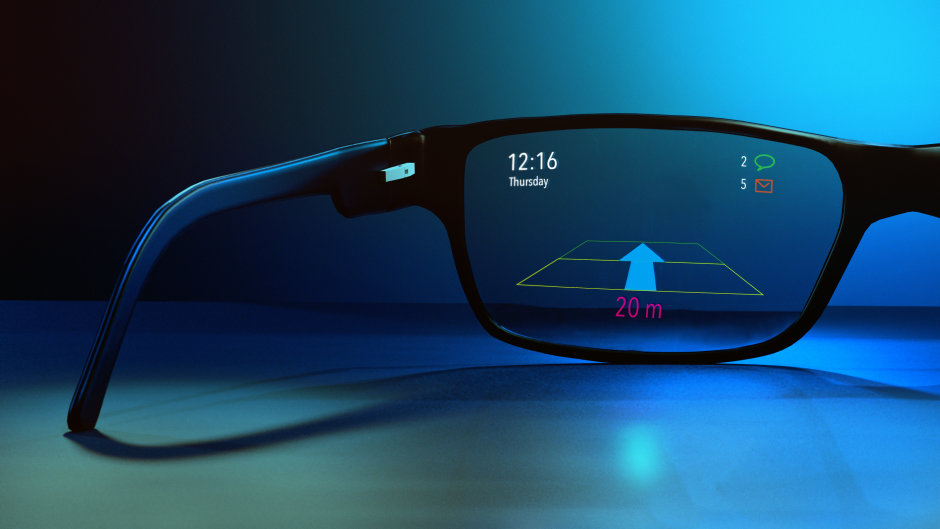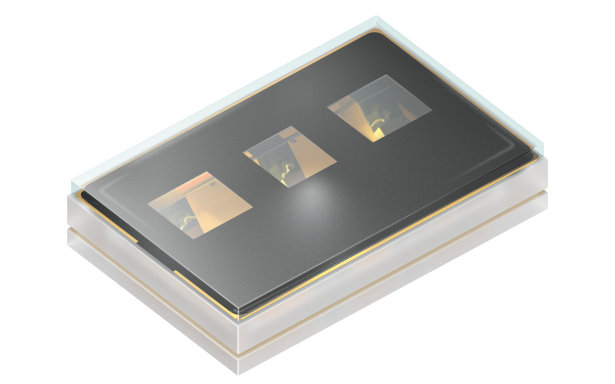• New Vegalas™ surface-mount module halves the size of projection light engine in smart augmented reality/mixed reality glasses
• Resulting space savings of this key optical component enables design of smart glasses to look and feel as normal spectacles or sunglasses
• ams OSRAM’s innovation in packaging of RGB SMT laser unit enables the development of the next wave of consumer wearable devices

With the help of augmented reality glasses, helpful information about the user's surroundings can be projected directly into the user's field of vision.
24.01.2022 | Trade Press
Premstaetten, Austria (24th January, 2022) -- ams OSRAM (SIX: AMS), a global leader in optical solutions, has revealed a prototype design for its new Vegalas™ laser emitter module, which promises to reduce the size of the projection light engine in augmented reality (AR) and mixed reality (MR) smart glasses by up to half. The ams OSRAM innovation in optical component technology opens up the potential to develop information-rich smart glasses which are as stylish and fashionable as the normal sunglasses and spectacles that consumers buy today.
Today’s market for AR or MR smart glasses is largely restricted to specialist industrial or professional applications. This is because components such as the projection light engine or battery are still rather large and heavy, and require bulky frames to support them. The opportunity for manufacturers to produce consumer-friendly smart glasses – which some observers see as the next generation of mobile computing, to replace the smartphone – depends on achieving a massive reduction in the size and weight of these components, without compromising the displayed image quality or brightness.
The Vegalas™ prototype design from ams OSRAM enables a significant reduction in the size of the projection unit in smart glasses.

The Vegalas™ prototype design from ams OSRAM enables a significant reduction in the size of the projection unit in smart glasses.
The introduction by ams OSRAM of a prototype design for the Vegalas™ module demonstrates that a light engine for smart glasses can be as small as 0.7cm3 – compact enough to fit in standard consumer fashion frames.
Martin Wittmann, director of marketing in the Visualization and Laser business line at ams OSRAM, said: ‘The optical and mechanical innovations in the Vegalas™ module are set to dramatically accelerate the growth in the market for smart glasses. Optical technology from ams OSRAM has previously been crucial to the development of market-changing features of new smartphone designs, such as face recognition, camera enhancement, and no-bezel displays. Now ams OSRAM is at the heart of the next revolution in mobile computing, enabling smart glasses to enter the mainstream consumer market.’
Breakthrough in miniature laser module design
The design for the Vegalas™ module from ams OSRAM combines three powerful lasers at red (640 nm), green (520 nm) and blue (450 nm) wavelengths in a robust, surface-mount package. The package is hermetically sealed to prevent contamination and degradation of the module’s laser chip-on-submount emitters. The module has a footprint of 7.0 mm x 4.6 mm and is 1.2 mm high. Volume production of the Vegalas™ module is expected to begin in the first half of 2023. Samples are available now in limited quantities.
ams OSRAM has collaborated with partners in the LaSAR Alliance (lasaralliance.org) to produce a reference design of a projection light engine for a laser-based scanning system (LBS) based on the Vegalas™ module, alongside a MEMS mirror module from STMicroelectronics and waveguide from Dispelix. This latest light engine measuring 10 mm x 11 mm x 6 mm (0.7 cm3) is some 60% smaller than an LBS light engine based on three discrete ams OSRAM TO38 laser emitters, which is 1.7 cm3 in volume.
In addition to lasers for projection light engines, ams OSRAM also offers a comprehensive portfolio of optical products supporting many other functions of AR applications. These include infrared LEDs and sensors for eye tracking, ambient light sensors, and components for applications such as room scanning, proximity sensing and indoor positioning.
Further information on near-to-eye projection can be found on the ams OSRAM website.













